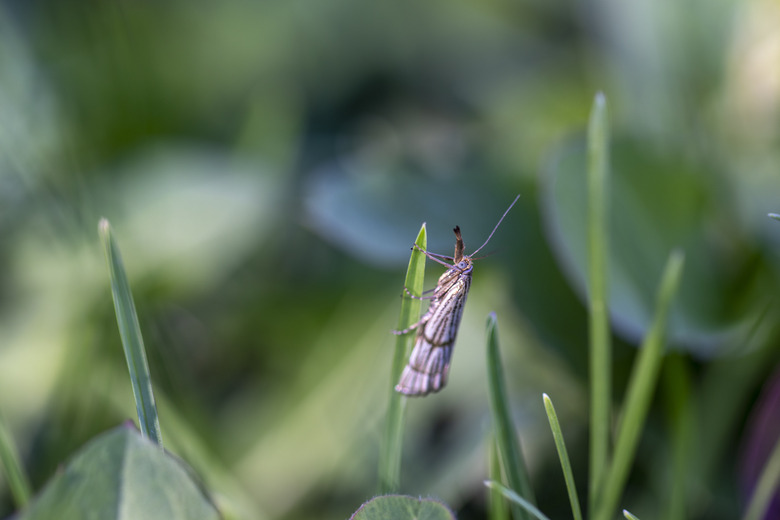How To Get Rid Of Moths In The Yard
We may receive a commission on purchases made from links.
Moths are never a good sign in your landscape. They might be what is commonly known as "lawn moths," or they could be cabbage worm moths or moths from other worms that enjoy munching on your veggies. Determining a strategy for moth removal depends on where the moths are congregating.
Moths on the Grass
Moths on the Grass
If moths are fluttering over your lawn, they will be brownish or white and are called "grass moths" or "lawn moths." They may look slim, as they tend to rest with their wings folded close. They may be seen not only on the grass but throughout the yard and might appear to swarm in the evening when they are looking for a good place to land and lay eggs. Their larvae, called "sod webworms," can seriously damage a lawn, and big brown patches can appear from their feeding on grass stems and blades.
Tip
During the early stages of sod webworm feeding, patches of grass often turn yellow, which may lead you to believe that the cause is dog urine if you have a pet.
You can determine if you have grass moths by using a floatation method. Mix 2 teaspoons mild liquid detergent with 1 gallon of water. Pour this over an area about 4 feet square right next to a brown patch because that's where the larvae are busy. The larvae will float to the surface. Count them after a few minutes and if there are more than four to six, you'll need to treat the area.
Treat grass moths with an insecticide designed for grass moths applied in the early evening when they are active. Most lawn insecticides, such as those containing pyrethrin, address grass moths. Follow the instructions carefully.
Moths in the Veggie Patch
Moths in the Veggie Patch
Your cabbage leaves have holes the size of Lake Mead. And maybe it's not just your cabbage but also your kale, broccoli, and cauliflower. These are caused by caterpillars, which are an immature stage of moths. If you see moths flying around your veggie garden, they are just looking for a spot to lay eggs on your leafy greens. Those eggs hatch into caterpillars, voracious creatures that can decimate a cabbage leaf in no time.
The first line of defense is to just pluck off the caterpillars and then drown them in a bucket of soapy water or just squish them, although squeamish gardeners may not want to go that route. You can instead cover the patch with barrier fabric, but you may want to just spray them with insecticide.
Ideally, use an organic solution — for instance, one that contains the Bacillus thuringiensis bacterium. This is sold under the names of Dipel, Thuricide, and some other brands.
Moths on the Porch
Moths on the Porch
Everyone knows that moths are attracted to light, so you may have a swarm of moths darting around any light fixture on your porch or patio. If you replace your outdoor fluorescent and incandescent bulbs with warm-colored LED lights, the moths will find them less attractive, reports a study published by the American Association for the Advancement of Science. In fact, warm-colored LEDs were more effective at deterring flying insects, including moths, even than "bug" lights.
Also, consider using adhesive traps that are like flypaper but larger. Place them near your outdoor lights.
